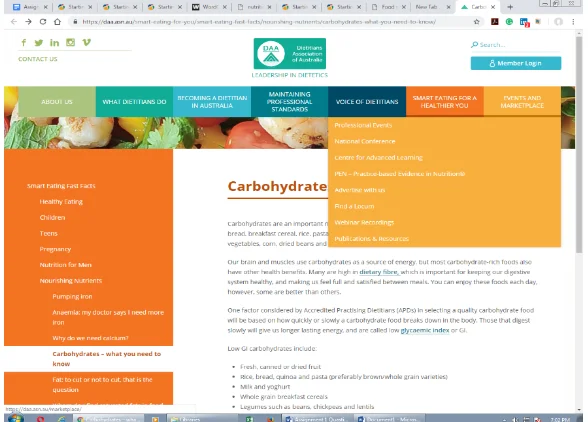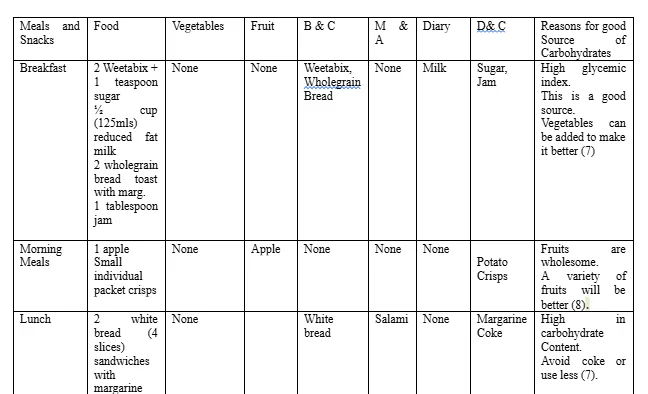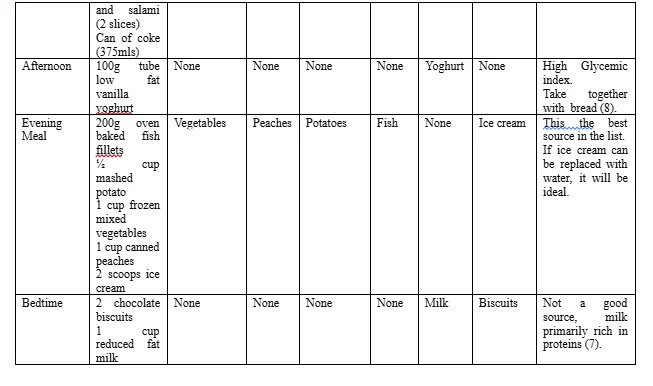Understanding Carbohydrate Macromolecules
Part A
1.Carbohydrates are macromolecules defined as polyhydroxy ketones or aldehydes. The term Carbohydrates was used to refer to this group of compounds due to the fact that, when heated, the resultant products are carbon and water. The empiric formula for many of the simpler carbohydrates is (CH2O) n, hence the name “hydrate of carbon.” However, carbohydrates exist in a wide range of structures such that other form of carbohydrates does not fit into the general formula (1).
Chemical structure
The primary components of carbohydrates are: carbon, hydrogen, and oxygen in different arrangements leading to various classes. Classes of carbohydrates include monosaccharides also called simple sugars such as glucose and fructose, disaccharides which are composed of two simple sugars joined by glycosidic linkage (L. Spencer). A good example of a disaccharide is sucrose made up of sucrose and fructose. Another class of carbohydrates is Oligosaccharides which consist of three to ten monosaccharides such as raffinose (1). When more than ten units of monosaccharides are joined together via glycosidic linkages, they form complex structures known as polysaccharides; these include starch, cellulose, and glycogen.
Digestion and metabolism
Carbohydrates in food sources in most cases do not exist in simple forms. The body cannot utilize Carbohydrates in its more complex forms. Therefore, when ingested, they are digested to simple forms for assimilations. Digestion of carbohydrates begins in the mouth by mastication, which increases the surface area for salivary amylase to digest starch to maltose. The next step in the digestion process happens in the small intestine (2). Pancreas also secretes amylase which breaks down the remaining starch into maltose. In small intestines, the enzyme maltase breaks down maltose into glucose which can then be absorbed into the bloodstream. In the process of mastication, salivary α-amylase acts shortly on dietary starch and glycogen, hydrolyzing random α (1→4) bonds. Carbohydrate digestion temporarily stops in the stomach because the high acidity inactivates salivary α-amylase. Further digestion of carbohydrates by pancreatic enzymes occurs in the small intestine. When the acidic stomach contents reach the small intestine, they are neutralized by bicarbonate secreted by the pancreas, and pancreatic α-amylase continues the process of starch digestion. The final processes of digestion primarily take place at the mucosal lining of the upper jejunum and is inclusive of the action of several disaccharidases (3). For example, the cleavage of α (1→6) bond in isomaltose is done by isomaltase and the cleavage of maltose and malt triose is done by maltase, each producing glucose, sucrase cleaves sucrose producing glucose and fructose, and finally the cleavage of lactose is done by lactase (β-galactosidase) , producing galactose and glucose. (Richard and Denise)
Metabolism of carbohydrates is primarily for the release of energy in the form of ATP. Complete metabolism of Carbohydrates takes place through a series of pathways. The first pathway is glycolysis which converts glucose through a series of ten steps to yield 2 ATP as the net energy and pyruvate (2). Pyruvate is converted to Acetyl-CoA catalyzed by a large enzyme complex known as Pyruvate dehydrogenase complex. Acetyl-CoA enters the Citric cycle also known as Kreb’s cycle to yield NADH and FADH2. These two energy carries enter the oxidative phosphorylation cycle to yield high energy in form of ATP. Water and CO2 are given as the by-product.

Role of the Carbohydrates
The primary role of saccharides in the body is to provide energy. Besides, they form part of structural components such as connective tissues and cell membranes. Combine with proteins (proteoglycans) or fats (lipoglycans) to form important parts of cartilage, connective tissue, the nervous system, and the immune system. They are also a source of fibre which helps in reducing constipation. Body organs such as the brain utilize primarily carbohydrates in form of glucose as the source of fuel (4).
Suggested dietary intake
Suggested dietary requirements of carbohydrates is influenced by a number of factors which includes but not limited, gender, age, health status, physical activities that one is involved in and occupation. These values may be different from one region to another. Based on European Food Safety Authority (EFSA) children and adults between the ages 1 year to 18 years and above require about 45-60 % energy intake come from Carbohydrates. This percentage is also supported by Food and drug administration (FDA). According to FDA the recommended minimum carbohydrate intake should be 300g per day. This is based on a 2000 calorie diet.
In addition, to total carbohydrates, recommended daily dietary fibre intake for Children between the ages (1-3) years is 10g/day for both genders. Adults require 25g/day of dietary fiber (5).
Food sources that provide Carbohydrates
The following are good sources of Carbohydrates, cereals like maize, wheat, rice, millet, potatoes, spaghetti, starchy vegetables, legumes, oatmeal, milk, yogurt, nuts, peanut butter, and whole fruits. This group of Carbohydrate sources have low glycemic index and are highly recommended.
The other class of sources included processed foods like biscuits, soft drinks, cakes, ice creams, chocolates. These foods are highly rich in sugar, and are said to have high glycemic index. They should be consumed with moderation as they tend to increase blood sugar levels sharply (6).
2. Analysis of one good and one bad internet site
This site is a good source of nutritional information. Information provided does not warrant the website to be flagged red based on the “10 Red Flags of Junk Science” tool. The content of the website has been published by the Dietitians Association of Australia which is a legally registered body of Accredited Practicing Dietitians (APD).
The website also has a link to a privacy policy, which gives users information on data protection. There is no subscription payment for the link and signing in the platform is only available to registered members. All links provided within the website are internal links referring to other articles within the website itself. No external links. The website, however, does not provide a link to references to support the arguments presented. Information up to date, the site well managed and information well balanced. This gives this website a pass. The pass is based on” website fitness check-up” tool.
This site gives an elaborate description of carbohydrates and such a way that it is easy to understand. The author(s) have tried to make simple major points that are of importance without biases.

This website is a bad source of nutritional literacy. Based on the tool “10 Red Flags of Junk Science”, the tagline for the website, “Our diet helps you cut refined, sugary carbs out, lose weight safely and quickly and then reintroduce ‘good’ carbs as you hone in on your target weight.” is too good to be true. They do not provide a scientific or rather a nutritional explanation on how this is achieved.
This site provides a disclaimer, “Not one thing contained on this Site intends to offer advice on health care. In case of any questions relating to health care, please call or visit your physician or other health care provider. Consult with either your physician or health care provider prior to deciding to begin the Atkins Diet as you should any other programs involving weight loss or weight maintenance. The weight loss phases of the Atkins Diet should never be used by persons on dialysis or by pregnant or nursing women. This site is moderated for content. Atkins Nutritionals reserves the right to remove any posts that are off-topic, offensive or otherwise unacceptable.” This is an indication that the content of the website is not verified by experts and rather they refer users to seek external advice before using their product.
In essence, this website is a marketing website with promotion services and does not provide nutritional literacy.


PART B
24 Hour Record Assessment and Food Suggestions


Breads and Cereals= B&C; Meat and meat alternatives= M&A; Dairy and Discretionary Choices
REFERENCES
4. Mann, J., & Truswell A.S. (2012) Essentials of Human Nutrition 4th Edition. Oxford University Press, New York.
5. Wahlqvist, M. (2011) Food and Nutrition; Australia and New Zealand 3rd Edition, Allen and Unwin, Crows Nest NSW.
6. Tapsell, L. (2013) Food, Nutrition and Health. Oxford University Press, New York.9+6
What Makes Us Unique
- 24/7 Customer Support
- 100% Customer Satisfaction
- No Privacy Violation
- Quick Services
- Subject Experts



